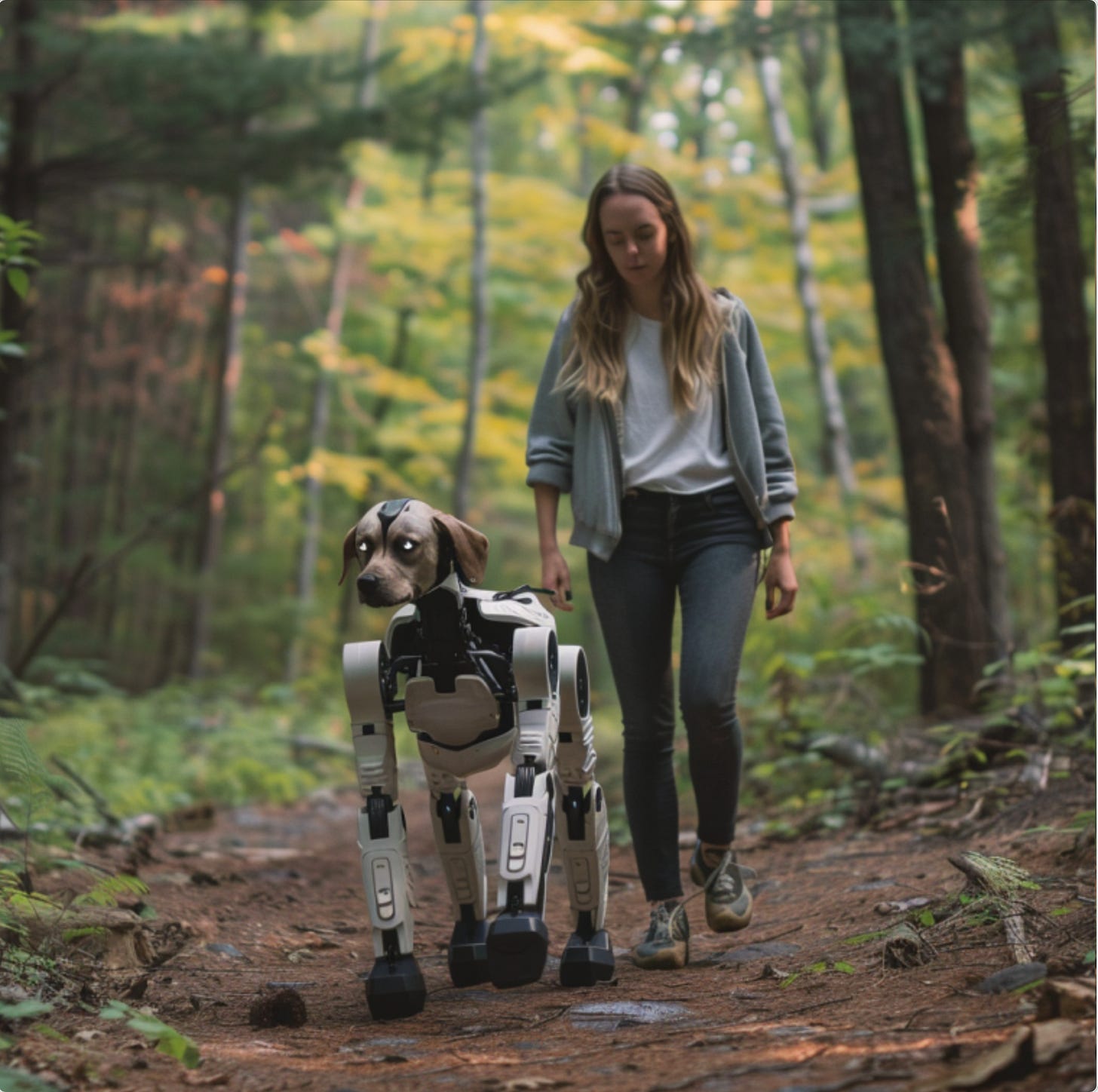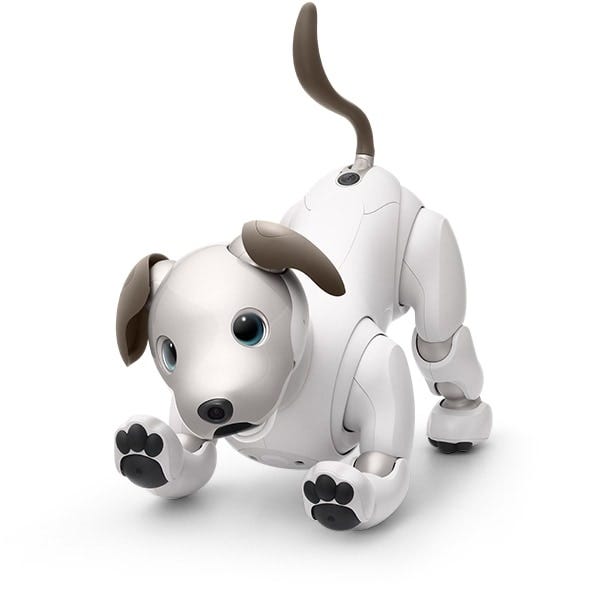The dog that didn't bark
The billion dollars business that never happened
Detective Gregory: Is there any other point to which you would wish to draw my attention?
Sherlock Holmes: To the curious incident of the dog in the night-time.
Gregory: The dog did nothing in the night-time.
Holmes: That was the curious incident.
"The Adventure of Silver Blaze", 1892
People are crazy about their pets. Here is some data from a recent summary put together from Forbes and from a couple of surveys (here and here):
2/3 of US households have a pet.
Dogs are the most popular pets in the U.S. (65.1 million U.S. households own a dog), followed by cats (46.5 million households) and freshwater fish (11.1 million households).
In 2022, Americans spent $136.8 billion on their pets.
4 out of 10 cat and dog owners said they would prefer to cuddle up on the sofa with their pet over their significant other.
1 out of 5 cat and dog owners said that they preferred spending one-on-one time with their pet than with their significant other.
On average, people said they would be more devastated if their dog ran away than if their partner broke up with them.
When my kids were young, we had several pets, including two cats, a budgie, and a lizard, but I was never attached to any of them. Then we got a greyhound named Tessie, who lived with us for many years. I was smitten. I was crushed when she became sick in her old age and we had to put her down.
I don’t own a dog now. Too much hassle. What I’d like now is something that looks and acts just like a dog, something that would offer all of the companionship and fun that I got from Tessie—but that didn’t eat, didn’t poo, didn’t shed, and would never bite a child, destroy furniture, or loudly bark. Something that didn’t cost a bundle in vet bills; something you didn’t have to deal with when you wanted to travel. Something that would never die.
I can’t be alone in wanting this. Many children beg their parents to get them a dog, but their parents say no because it’s too expensive or difficult. Or because they are allergic. Or because their apartment doesn’t have room for a pet or doesn’t allow tenants to have one.
The solution is a robot dog. There’s money to be made here—if just 1/100 of the families who will buy a dog every year spend the same money on an artificial alternative, that’s a billion-dollar-a-year business.
So, where are the robot dogs?
They exist. You can buy them on Amazon—here’s what I get when I type in “robot dog”:
Robot pets have been around for a while—check out the Wikipedia article here. Here is Hasbro's Furby, released in 1998.
Here is Sony's AIBO, released in 1999.
Here’s a cartoon that Jack Ziegler made for the New Yorker when the AIBO came out:
Then there is the Tamagotchi, released in 1996. It sold over 90 million units. It isn’t a robot pet, though; it’s more of a representation of a real animal.
90 million sales ain’t nothing! These are popular toys. But they are just toys. They don’t replace pets. Indeed, the AIBO, which is the most direct attempt to simulate a pet, never did particularly well and was eventually discontinued by Sony.
In all the excitement about AI, I hear nothing about robot pets. If something new is on the market, it hasn’t captured anyone’s attention. So, again, where are they? What’s keeping us from having them?
Possibility 1: It’s an engineering problem
One of the lessons of the last few years is that intelligence is much easier to model than action. We have chatbots we can have conversations with, but we are nowhere near to having a household robot that can load a dishwasher or fetch a beer from the refrigerator.
There are two sets of problems here when it comes to robot dogs. First, a successful robot dog must be able to do things—to roll over, beg, walk around, navigate the world, and maybe even chase a stick or two. Building a machine capable of this is an extraordinarily difficult engineering task. The closest we have might be the creations of Boston Dynamics, but they are marketed as industrial machines, not pets.
There are also potential military applications. You might be more likely to be killed by a robot dog than have one bring you your slippers. Check out this fake ad, inspired by a Black Mirror episode.
Second, robot pets have to be made to look and feel like real animals. I doubt that a child begging her parents to buy a puppy would be delighted to come home from school one day and find this waiting in her bedroom.
We will only become attached to machines that are similar to the real living things we are already attached to. A good robot dog should have an external shell that looks and feels like fur. More like a Furby than an AIBO. You should scratch it behind the ears and not feel cold steel. It should move like an animal, sound like an animal, and so on.
Possibility 2: We will never have robot pets because we don’t want them
Suppose we can solve the engineering problems and have robot animals that look and act like Tessie. Would we want them?
Long ago, the biologist E. O. Wilson popularized the biophilia hypothesis: the idea that we have an innate affinity for living things. Wilson emphasizes the spiritual and moral benefits of an attachment to nature, warning that we “descend farther from heaven’s air if we forget how much the natural world means to us.” But there are more tangible benefits as well. Many studies show that even a limited dose of nature, like a chance to look at the outside world through a window, is good for your health. Hospitalized patients heal more quickly; prisoners get sick less often. Being in the wild reduces stress; spending time with a pet enhances the lives of everyone from autistic children to Alzheimer’s patients.1
Does this work for simulations of nature? One reason to be skeptical is from a study by psychologist Peter H. Kahn Jr. and his colleagues. They put 50-inch high-definition televisions in the windowless offices of faculty and staff members to provide a live view of a natural scene. People liked this, but in another study that measured heart-rate recovery from stress, the HDTVs were shown to be worthless, no better than staring at a blank wall. What did help with stress was giving people an actual plate-glass window looking out upon actual greenery.
Maybe, then, you have to believe that you’re really looking at nature to get the effect. And maybe you have to believe that your dog is a living creature to become attached to it—a duplicate, even a perfect one, isn’t enough.
If so, we’ll never have robot pets because we don’t want robot pets.2
This paragraph is a modified version of something I wrote a while ago for the New York Times, here.
It might have occurred to you that the same issues arise when we consider the possibility of artificial people. I’ll discuss this in future posts.











I think people want to love and be loved back in return.
Before the start of the pandemic, I adopted a greyhound. I had never ever had a dog at home. Byron was a gorgeous creature, full of terrors and traumas caused by the hunter who was his first owner. It supposed a challenge to take care of him in a city, plenty of hard, disturbing noises, that could provoke some crazy runs, facing roads, cars, and a tramway. Some nights of fireworks, I found him trembling inside the bath. Due to poor food attention when he was a puppy, he tended to eat as much as he could in one intake, and was always in search of outdoor debris, droppings, and corpses.
He died one year ago from sudden viral pneumonia. And a part of me also passed away. He was the dog who never barked, always waiting for me, for any stroke, loyal and loving, tender and warm. He didn't bark, he couldn't talk, but I have never been so connected with another living being. There weren't those ultimate barriers, the shields we put between humans, even between the most affectionate lovers. I miss him every day, sometimes with funny, happy memories, sometimes crying, like right now.
I am a complete atheist, and I don't believe in such fantasies people make of afterlives. But if I am wrong, and there is a Heaven up there, I hope Byron will be there, running wild and free, unbound by limits and evil.